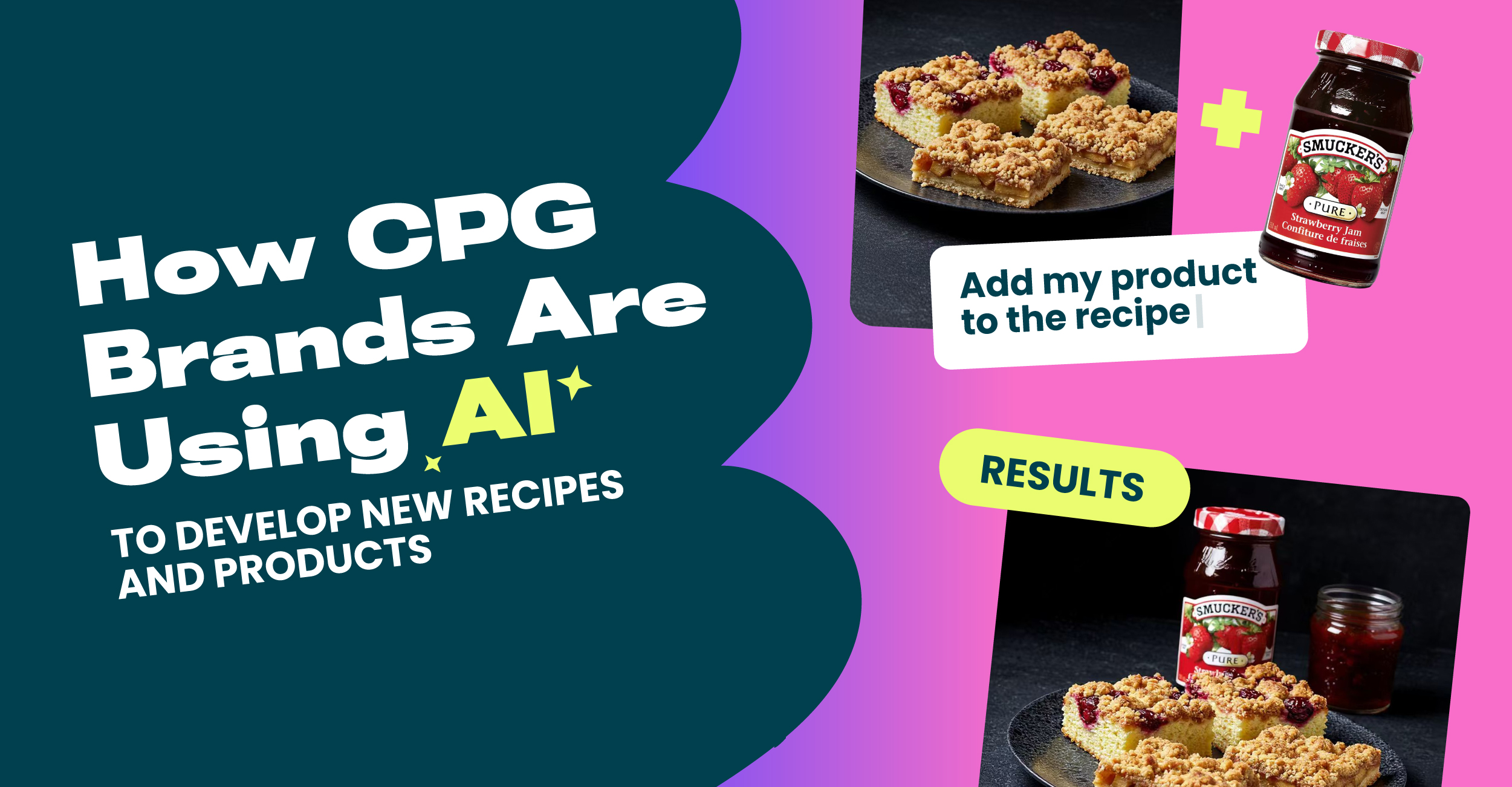
AI is no longer just a buzzword in food tech, it’s a practical tool shaping the next wave of product innovation. As competition intensifies and innovation cycles tighten, technology is becoming essential for staying relevant.
The momentum is clear, CPG leaders are rapidly embracing AI to modernize how they operate and innovate. By 2024, 71 percent had implemented AI in at least one business function, up from just 42 percent the previous year, according to a McKinsey report on AI transformation in the sector.
Simultaneously, McKinsey’s personalization research shows that 74% of consumers expect brands to understand their unique needs and preferences. Expectations around health, sustainability, and convenience are shaping demand for more tailored food experiences.
These trends point to a future where agility and personalization are non-negotiable. With trend cycles accelerating and niche diets on the rise, AI helps brands predict, adapt, and deliver faster.
This article is for food marketers, R&D teams, and innovation leads exploring how AI can accelerate recipe development without compromising flavor or function.
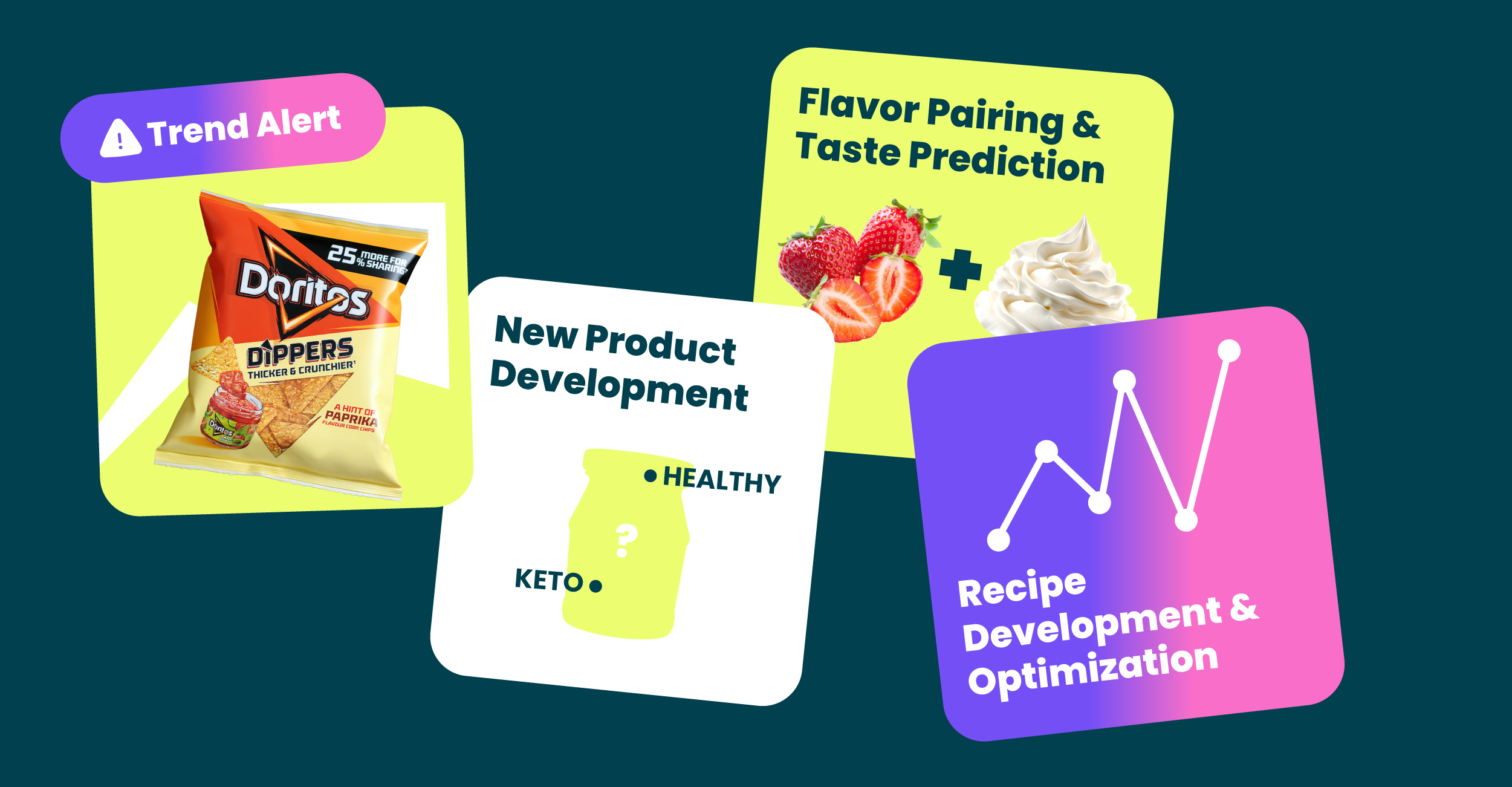
AI analyzes consumer search trends, social media activity, and purchase data to uncover emerging ingredient interests. Brands use these insights to spot microtrends, predict seasonal preferences, and tailor launches to regional demand.
AI helps brands design recipes and products tailored to specific dietary needs—whether keto, low-FODMAP, or other lifestyle trends—by generating ideas that align with both nutritional specifications and consumer preferences. This enables teams to kickstart new product development with confidence while still refining taste and experience through the traditional, human-led process.
AI supports the creation of fully developed recipes from concept to content. By generating innovative recipe ideas, suggesting ingredient substitutions, and predicting consumer appeal, brands can craft dishes that resonate with their target audience. Beyond formulation, AI assists in producing high-quality imagery, step-by-step instructions, and SEO-optimized copy, ensuring recipes are both engaging and discoverable across digital channels.
AI can help figure out which flavors go well together and even predict how a recipe will taste (and if your audience will like it). By looking at ingredient chemistry and feedback from real people, it helps teams mix and match with confidence and create combinations that people will love.
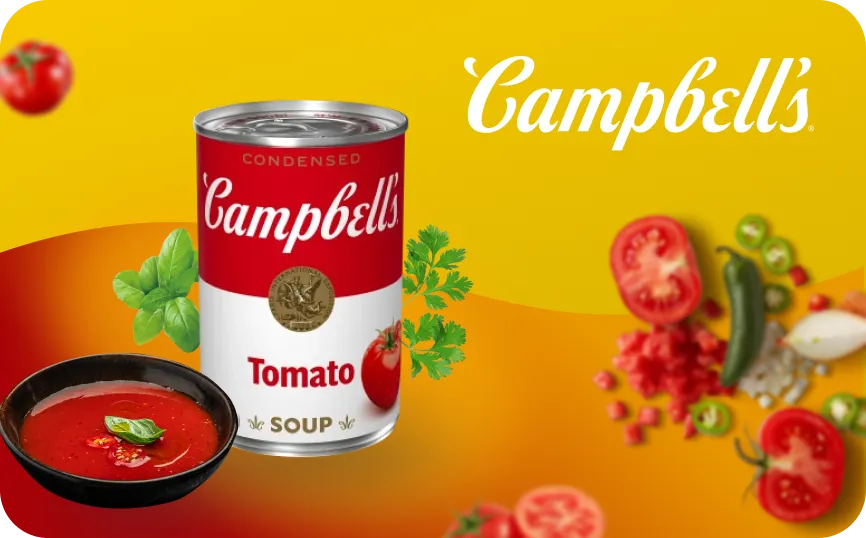
Campbell’s Soup used Tastewise’s GenAI platform to make product development faster and smarter. The tool gave them real-time insights into trends and consumer preferences. This helped them test ideas and launch new products more quickly. It also refreshed marketing for existing products with strategies that clicked with today’s consumers. Overall, Tastewise helped Campbell’s move from idea to market much more efficiently.
Nestlé uses AI to optimize recipes for both wellness goals and environmental impact. According to FoodNavigator, the company developed over 1,300 concepts using AI and cut R&D time from three months to just three weeks, aligning new products with both consumer health goals and carbon footprint targets. The company is leading in data-driven food innovation by aligning product development with both wellness and sustainability objectives.
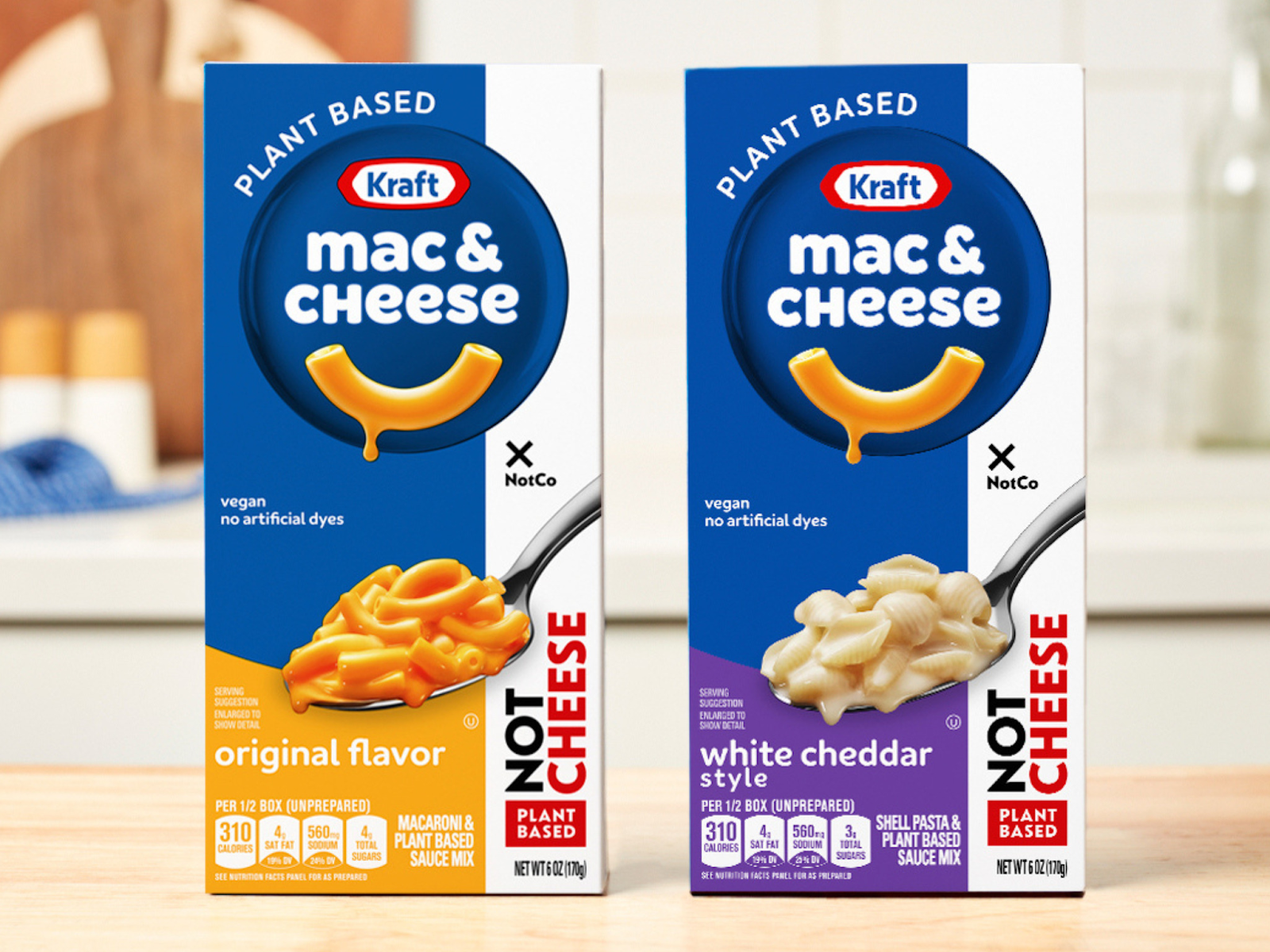
NotCo, a Chilean food tech company, uses its proprietary AI platform, Giuseppe, to develop plant-based alternatives that closely mimic animal-based products. Giuseppe analyzes vast datasets of ingredients to optimize taste, texture, and functionality, speeding up product development and enabling efficient formulation and scaling. The AI has powered products like NotMilk and NotBurger and attracted partnerships with major food companies, including a joint venture with Kraft Heinz to create plant-based versions of iconic products. NotCo's AI collaborates with chefs and scientists to recreate dairy, meat, and egg substitutes that match traditional flavor and texture.
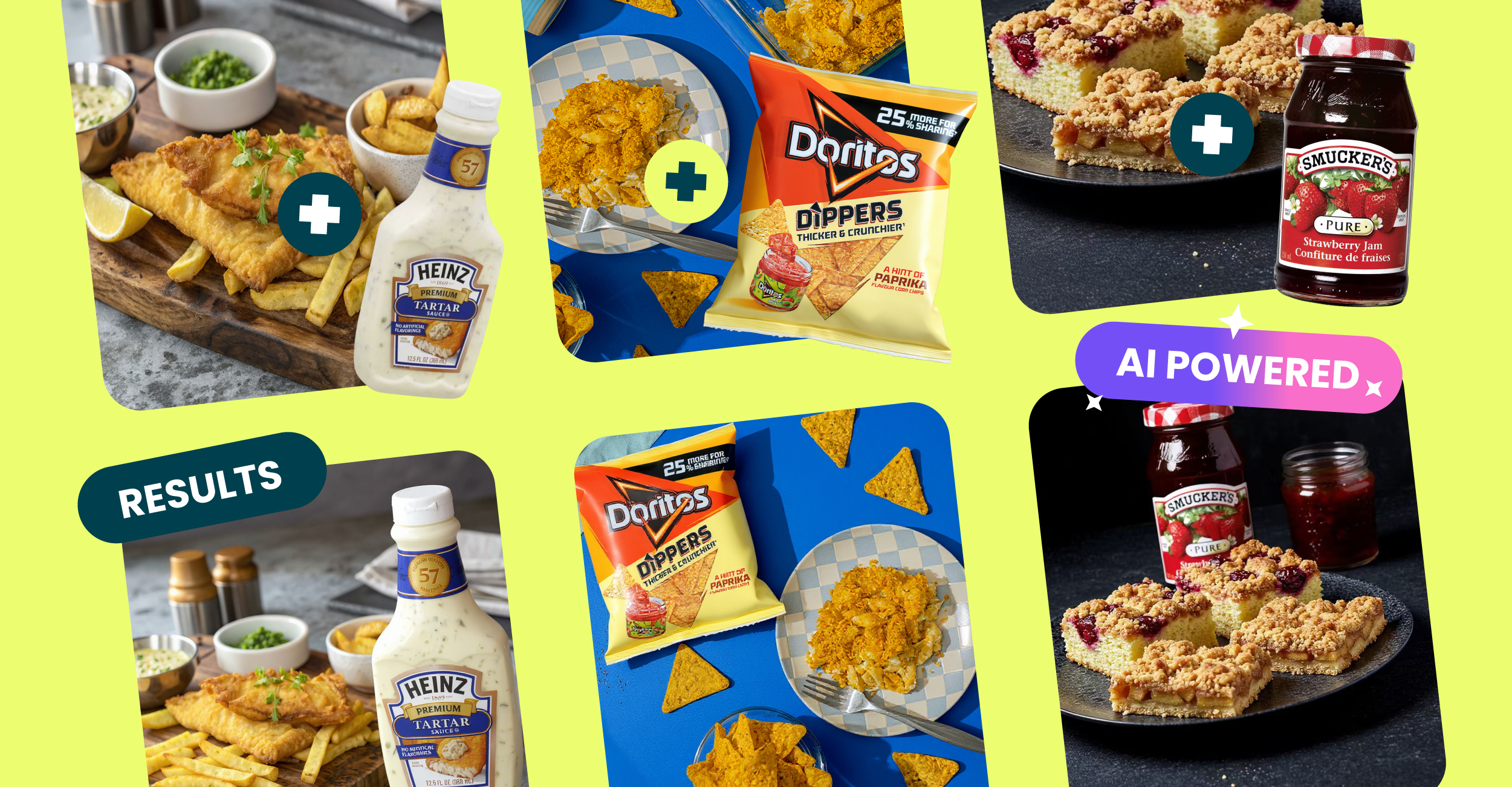
SideChef leverages AI to support CPG brands in enhancing every aspect of recipe development and content creation. By utilizing their SideChef Studio AI, we can help brands generate innovative recipes, optimize recipe descriptions for SEO performance and audience engagement, and create visually appealing recipe images that strategically incorporate product placement while adhering to brand guidelines.
SideChef partners with a wide range of brands, many of which have begun experimenting with integrating AI into their recipe creation workflows, allowing for more efficient, consistent, and on-brand culinary content that resonates with consumers and drives product engagement.
Key platforms that are already well-known in using AI for Trend forecasting include Tastewise, Gastrograph AI, Analytical Flavor Systems, and Spoonshot. These tools offer capabilities like flavor mapping, trend forecasting, and sensory data modeling to help CPG teams build better products with data-driven confidence.
SideChef also contributes to this space with solutions more focussed on Recipe Content Creation and Recipe Marketing Campaigns. Its AI Food Image Generator helps brands create high-quality food visuals quickly, ideal for digital recipes and recipe-based campaigns.
Most companies adopt white-labeled platforms to speed up experimentation without building internal AI teams, while a handful develop proprietary tools tailored to their own needs. The right approach depends on a brand’s innovation budget, speed-to-market needs, and long-term product strategy. Launching with small pilot programs is often effective for CPG teams preparing to test and explore new capabilities and benefits. Next, we’ll lay out what the most common benefits are for CPG brands.
AI shortens the R&D cycle by allowing teams to test, adjust, and validate recipes virtually before physical prototyping. This capability is especially valuable in a fast-moving category like food, where seasonal trends and shifting diets require rapid response. Digital simulation tools help brands go from concept to shelf in a fraction of the time compared to traditional testing workflows.
By reducing reliance on physical test kitchens, AI helps eliminate unnecessary ingredient waste and cuts down on operational overhead. Virtual formulations also mean fewer pilot runs, allowing R&D teams to focus only on the most promising concepts, ultimately conserving budget and resources throughout the development pipeline.
AI allows brands to align product design with specific consumer segments by analyzing geographic preferences, lifestyle data, and seasonal demand. Whether creating a low-sugar snack for Gen Z or a regional spice blend for a specific market, AI helps ensure that product launches feel timely, relevant, and culturally attuned,boosting the likelihood of retail success.
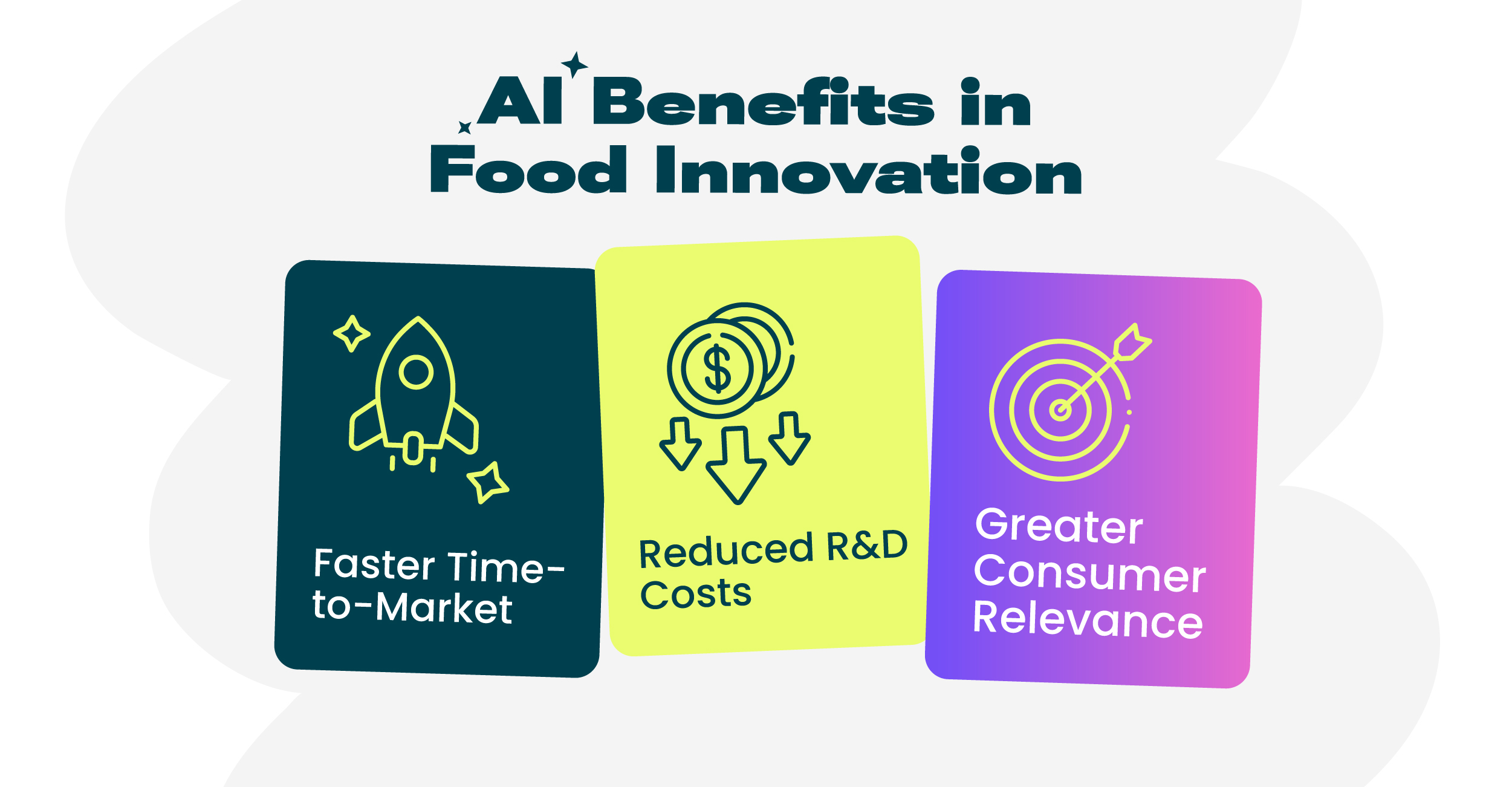
AI models are only as strong as the data they receive. Incomplete, outdated, or unstructured data can limit accuracy and insight. High-quality datasets, ranging from sensory panels to consumer reviews and purchase data, are essential for training reliable algorithms. Without robust and diverse inputs, even advanced AI models can produce skewed or irrelevant results, leading to misguided product development decisions.
When it comes to recipe creation and image creation, the briefings and brand guidelines are essential to deliver outcomes that match with the need.
Taste and texture remain tough to model fully through algorithms. While AI can simulate flavor profiles or ingredient pairings, translating those predictions into actual mouthfeel or nuanced taste experiences is far more difficult. These sensory qualities often require expert chefs, food scientists, and real-world testing to validate AI-generated recipes before launch.
Human QA is essential for both recipe and image creation. At SideChef, we don’t publish fully AI-generated recipes; instead, we use AI to inspire the team with ideas tailored to a specific target audience or campaign occasion. Typically, AI is integrated into an existing recipe optimization process: we start with a proven recipe and enhance it—refining the copy or imagery to better resonate with the audience, suit a particular food occasion, or include branded product placements.
Our team provides brands with AI-generated images through a white-glove service, carefully reviewing each one to ensure it looks fully realistic and avoids common deformation issues. Check out our comparison of AI tools to see a live test of some common tools.
Cross-functional understanding and buy-in can be a barrier. Implementing AI tools successfully requires collaboration between departments, R&D, marketing, data science, and operations. Misalignment can delay adoption, especially if teams lack clarity on how AI fits into their workflows, or are hesitant to try it out due to personal assumptions on its potential limitations. Training, change management, and shared goals are key to embedding AI into long-term innovation strategy.
AI is most definitely not replacing chefs or talented food creation. But it is transforming how food brands innovate and it optimizes their workflows. CPG companies that integrate AI into their recipe development process gain speed, precision, and insight, critical advantages in today’s competitive marketplace.
Want to explore how SideChef can help you bring AI-driven recipes to life?
Partner with SideChef to speed up your content production, and explore with us how to position your products at the center of engaging recipe experiences.

